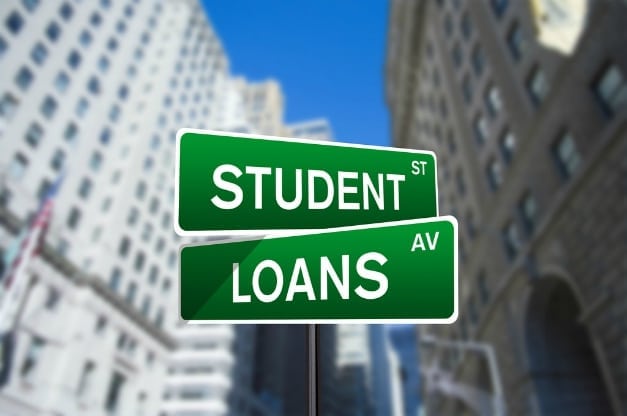This year, the possibility of student loan changes is higher.
This is due partially to the telling role government can play on financial stability.
Read on to learn the 7 student loan changes you can expect this year.
7 Student Loan Changes In 2017
The only thing constant is change, and nothing makes that point clearer than the election of Donald Trump.
Understand, that as this being written, he may tweet a decree to undermine everything you just read.
Betsy DeVos is playing with Borrower Defense to Repayment Rule, and currently, 18 Democratic governors are suing the Department of Education…Enjoy the ride.
That being said, here’s where student loan changes stand as of now.
1. Student Loan Forgiveness
Today, the standard repayment period for federal government student loans is 10 years.
Under an income-driven repayment plan, payments are capped at 10% of a borrower’s income for 20 years (for undergraduate loans) or 25 years (for graduate student loans).
Trump’s student loan proposal would raise the income cap, but shorten the repayment period.
Under Trump’s plan, your monthly student loan payments would be capped at 12.5% of your income. After 15 years of monthly payments, the government would forgive your remaining student loan debt.
Punchline: While Trump’s proposal raises the monthly payment cap from 10.0% to 12.5% of income, his student loan proposal forgives the remaining student loan balance five to 10 years sooner than the current income-driven repayment plans.
2. Student Loan Repayment
Trump also proposed to combine the existing repayment plans, Pay as You Earn (PAYE) and Revised Pay as You Earn (REPAYE), into a single plan to make it less confusing for borrowers.
Under the PAYE and REPAYE income-driven repayment plans, you pay 10% of your discretionary income each month toward your federal undergraduate student loans for 20 years, at which point any remaining balance on your federal undergraduate student loan is forgiven.
Under REPAYE, if you have graduate school student loan debt, the repayment period is 25 years before your remaining student loan debt is forgiven.
Punchline: The existing student loan repayment plans may be combined into a single repayment plan with further details needed to assess the impact.
(Pro Tip: Don’t wait for these changes repayment plan changes to go into effect. Download the free 8 Plan Cheat Sheet to get the full details of which plan is the best fit for you and lifestyle. Click here to learn more.)
3. Variable Rate Student Loan vs. Fixed Rate Student Loan
When you borrow or refinance your student loans, you have a choice between a fixed interest rate and a variable interest rate.
There are advantages and disadvantages to each choice.
For 2017, pay attention to interest rates.
Last December, the Federal Reserve unanimously raised its benchmark interest rate by 0.25%.
The Fed also forecast three additional rate hikes in 2017.
While this is good news for savers in the form of higher yielding savings accounts, higher interest rates adversely affect consumer borrowers with variable interest rate loans, such as student loans (as well as credit card and mortgage debt) in the form of higher interest costs.
While the December rate hike was minimal, there likely will be additional rate increases this year.
If you currently have variable rate debt, you should consider refinancing into a fixed interest rate loan.
If you are borrowing a new student loan, you should consider a fixed interest rate student loan.
Punchline: If you currently have a variable interest rate student loan, you can refinance with private student lenders and convert variable interest rate student loans to a fixed interest rate student loan.
4. Private Sector & Banks
President Trump wants to increase the role of the private sector.
Among all the student loan changes, this one would give the greatest preference to private lenders, such as banks in the issuance of federal student loans. Why?
Trump believes that the federal government generates too much “profit” from issuing student loans.
He wants private sector lenders to participate in federal student loan origination.
Currently, only the federal government issues all federal student loans through the Direct Loan program.
Prior to 2010, the federal government issued student loans and private banks issued federally-backed student loans.
Punchline: How can student loan borrowers benefit from banks and other financial services companies increasing their participation in student loan origination?
There may be several benefits, but prospective student loan borrowers would, at a minimum, be looking for lower student loan interest rates, better customer service, and a simpler student loan application process — hopefully.
Bear in mind, banks can demand payment sooner than graduation.
In addition, their deferment policies are not as flexible.
5. Colleges & Universities: What have they done for us?
The high cost of tuition at many colleges and universities has led students to borrow more to fund the cost of their education. (Yes, state schools were free, once upon a time.)
Financial aid, scholarships and other financial support help offset the cost of higher education.
However, Trump has called on colleges and universities with large endowments to help lower the cost of tuition, or face potential loss of tax exempt status.
We’ll see how this pans out, since DeVos’ intrusion.
“If the federal government is going to subsidize student loans, it has a right to expect that colleges work hard to control costs and invest their resources in their students,” Trump said in a speech in October of 2016, before the election. “If colleges refuse to take this responsibility seriously, they will be held accountable.”
Punchline: The proposal would seek to increase risk sharing and financial responsibility between the federal government and colleges and universities.
Currently, there is a mismatch in risk sharing and financial responsibility.
Colleges and universities set tuition rates, but the federal government assumes all default risk on federal student loans.
Simply put; the schools get paid, have no incentive to keep students in school, and the Feds bear the financial burden.
If the proposal is implemented, tuition rates could decrease and therefore students would borrow less debt.
6. Proposed Legislation
Under the Obama Administration, Congress proposed multiple legislative bills. Congress introduced them to help alleviate the student loan debt burden.
Here is a rundown of some of these bills:
- Reauthorization of the Higher Education Act: The primary law that governs higher education. This includes student loans, which is reauthorized every five years.
- Stop Taxing Death and Disability Act: A proposal to stop taxing forgiven student loan amounts once the borrower has died or become disabled.
- Simplifying The Application For Student Aid Act: A proposal to modify the Higher Education Act and simplify the Free Application for Federal Student Aid (FAFSA). This allows borrowers to continue to use income tax returns from two years prior to the application date (rather than only one year prior).
- Various Employer-Sponsored Student Loan Repayment Plans: Proposals to create incentives for employers to help their employees repay their student loan debt.
Punchline: There are multiple legislative bills in various stages in Congress. Stay tuned, because we are one tweet away from knowing the status on these.
7. New Student Loan Rates
Federal law determines the interest rates for federal student loans.
Interest rates reset every July 1 and run for one year until June 30.
All federal student loans are fixed interest rates loans.
However, you can refinance student loans with a variable interest rate.
Punchline: This spring, the interest rates for federal student loans will be set for the following award year based on the 10-year Treasury note rate, plus a fixed percentage that differs by loan type. Continue to watch the 10-year Treasury.
A final word of caution: Act fast if any of these changes seem appealing.
Even if a lot of them are in-progress and seem definite, Trump can always change his mind.
Continue to check in at USSLC to see if there have been any other updates you should know about.
What do you think of these student loan changes? Let us know in the comments below!
Up Next: Student Loan Forgiveness for Federal Employees
(Pro Tip: Don’t wait for these changes repayment plan changes to go into effect. Download the free 8 Plan Cheat Sheet to get the full details of which plan is the best fit for you and lifestyle. Click here to learn more.)



Leave a Reply